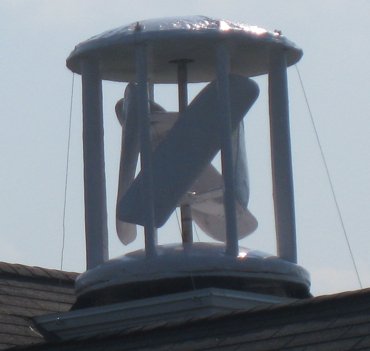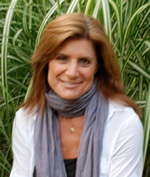One traditional home remodeler on Chicago’s North Shore is positioning himself for success in the emerging green economy.
Ron Cowgill, who owns D/R Services Unlimited Inc. in Glenview, last August formed a new company that promotes his newly acquired expertise as a renewable energy systems seller and installer. The new enterprise will focus on solar and wind power systems, as well as setting up charging stations for electric cars.
Mr. Cowgill, 48, launched WinSol Power Co. last August after he installed two solar photovoltaic systems and one solar thermal unit for homeowners on the North Shore. That might not sound like much, but Mr. Cowgill is spending the cold winter months taking orders and so far has lined up 25 to 30 projects for the spring, when it’s safer to get back onto rooftops.
A residential solar panel array installed by Mr. Cowgill’s company
Aside from solar installations, he’s also a distributor for WindTronics, a wind turbine division of Honeywell International Inc. Mr. Cowgill is also installing wind turbines manufactured locally by Balanced Wind LLC. He’s targeting homeowners, commercial properties and institutions, including schools.
Reinventing himself to participate in the anticipated growth of new technologies in wind and solar wasn’t complicated. Mr. Cowgill enrolled in training programs run by Solar Energy International. Once you’re already in the business, the learning curve isn’t very steep to understand how to install and operate these new systems, he notes.
Mr. Cowgill also educates homeowners and others about renewable energy during a weekly home-improvement radio show that he hosts Saturday mornings on Talk Radio WCPT (820 AM and 92.5 and 92.7 FM).
Crain’s recently talked to Mr. Cowgill about his efforts to get ahead of the pack before renewable energy systems become red hot and every installer in Chicago tries to get a piece of the action.
Crain’s: What inspired you to launch a new company that highlights only renewable energy systems?
Mr. Cowgill: We survived the last few years of this tough economy because we offered full-service remodeling and didn’t focus on any one thing. As part of that, we started doing solar and wind installations. Then we saw that there’s growing interest in these areas, driven right now by federal and state tax credits, which are lowering the buy-in price. Also, rising oil and gas prices — and expected hikes in electricity prices, too — have a lot of people thinking about hedging their bets by installing wind or solar to produce their own heat and electricity.
Crain’s: What’s the major benefit of turning this segment of your services into a separate business?
Mr. Cowgill: By creating a separate entity, we can market just wind and solar so those services will stand out. Before, we were doing renewable energy work with all our other remodeling and it got lost in the mix. Now we have a separate website for WinSol and we’ll be going to the home shows this spring and summer. We plan on taking a wind turbine with us, set it up and spin it so people will come and talk to us.
Crain’s: Who do you envision as your target market to buy these units?
Mr. Cowgill: Twenty percent of the people we’re talking to are the Chicken Littles who say “the sky is falling” and they want to be able to generate their own electricity. Many of our clients are people that just hate the utilities. They think the utilities are evil corporations that suck their money away and they don’t want to be reliant on them. Then there’s a few that say they think it’s cool to move away from fossil fuels and they want to help the environment. We need all three types of those people to get the market really going so the costs can eventually come down.
Crain’s: These renewable energy systems cost more upfront compared to traditional heating and cooling units. Is it tough to sell the concept of wind or solar power?
Mr. Cowgill: Once you buy wind or solar and install it, that’s pretty much all you’re going to spend over the life of the unit. Here’s my analogy that I tell people: If you went out and bought a car, and included in the original purchase price all the oil changes and gas you’d ever have to put in it, it would be pretty expensive. People look at solar panels and think it’s too expensive. But if you think about it, that money you spent upfront is constantly producing electricity or heat without spending any more money. The maintenance costs are minimal.
One of Mr. Cowgill’s wind-rurbine installations
Crain’s: From your initial orders, what’s more popular — wind or solar?
Mr. Cowgill: Right now, we’re looking at more wind than solar, mostly because it’s a spinny thing and it looks cool. It catches people’s eyes and they want to know all about it. People like things that move and I honestly think the wind products are going to move more than the solar.
If some sites aren’t great for wind, then we can introduce the solar energy systems.
Crain’s: What’s the competition like right now in your field for the renewable sector of the market?
Mr. Cowgill: There’s a lot of people in our business starting to get certifications for renewable energy systems. The reason we’re doing it now is to get the training and some installations under our belt.
I’ve been out there talking to the Chicken Littles, the utility haters and the people that just care enough to do it. There’s a pent-up demand for this. What’s really kicked it off are some of the tax credits and incentives, which are bringing down installation costs and making it more affordable for more people. We know that wind or solar can be done on 60% to 70% of buildings in the Chicagoland area.



